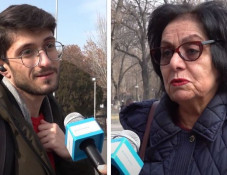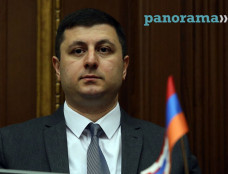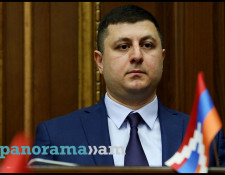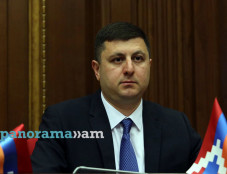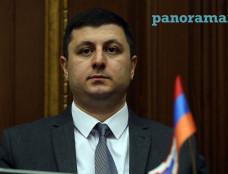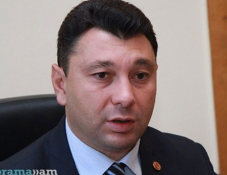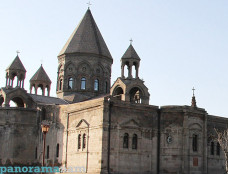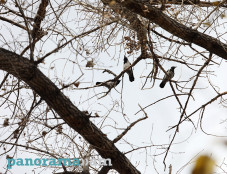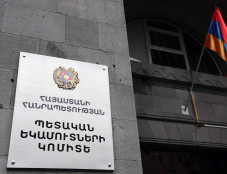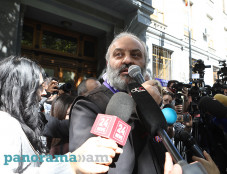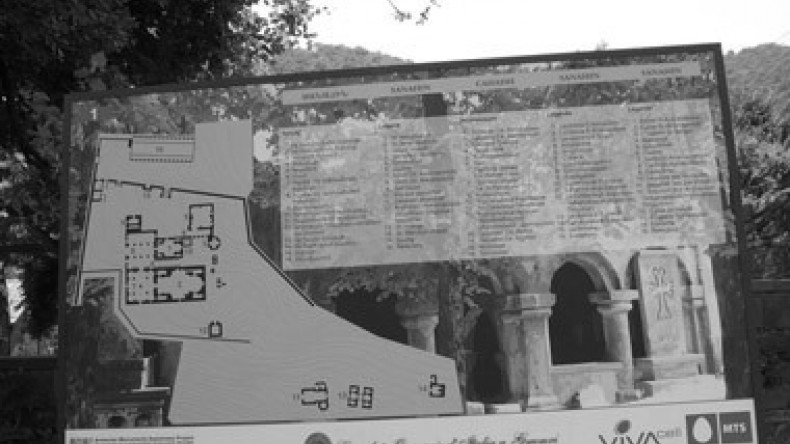
VivaCell-MTS installs multilanguage information panels in the territory of Sanahin Monastery
VivaCell-MTS, a subsidiary of Mobile TeleSystems OJSC (“MTS” – NYSE: MBT) and the Armenian Monuments Awareness Project (AMAP) today announce the next installation of its program of marking historic sites.
“The key idea behind the implementation of this complex program is to stick close to our roots and to get exposed to our nation’s thorny way to its present day. For many years to come the multilingual signs will guide the visitors to the cradle of the Armenian soul and the glorious cultural identity of Armenians. Thanks to these multilingual signs, the visitors of these holy places will obtain a window into the past – to the heroic epoch of Bagratuni reign marked by the wisdom of Grigor Magistros,” commented VivaCell-MTS General Manager Ralph Yirikian.
Sanahin, along with its neighbor Haghpat Monastery, has been inscribed on the World Heritage List of the Convention concerning the Protection of the World Cultural and Natural Heritage. Inscription on this List confirms the exceptional universal value of a cultural or natural site which deserves protection for the benefit of all humanity. This magnificent monument is placed in a wonderful site in Lori marz and features an academy, scriptorium and numerous churches, chapels and mausoleums.
Sanahin, like its nearby cousin, Haghpat, shared in the fortunes and travails of the times, intertwined in history while unique as a centers of learning, religious study and fonts of spirituality. Both are listed on UNESCO’s List of World Heritage Sites.
The exact date for the founding of Sanahin is unknown. It is believed to have been founded in the 4th century when a St. N’shan (Holy Sign) cross was erected. Sanahin is said to be the older monastery (its name in Armenian translates into "this one is older than that one").
Sanahin later became the seat of power for the Kiurikian kings, royal patrimonial sepulcher (until mid -12th c.), and residence for the Kiurikian church diocese (until mid-11th c.), leading to the construction of many religious and civil structures there. In both monasteries, especially in Sanahin, humanitarian sciences, music and medicine were studied, scientific treatises composed and paintings (mostly miniatures) created.
Sanahin complex consists of five churches, two gavits, a cemetery, seminary (academy), book depository, bell-tower, patrimonial sepulchers and other structures once encircled by a fortified wall. The main buildings are grouped around the main church, forming an integrated whole.
At the center of the compound is St. Astvatsatsin (Holy Mother of God) church, built sometime between 928 and 944 by the Bagratunis. It is a domed cross-wing church outside and rectangular inside with two-story annexes at each of the four corners. The drum and cupola were rebuilt much later, most probably in 1652 during the reconstruction of the complex by Sargis Ustah and his students, according to one of the surviving inscriptions.
Immediately next to St. Astvatsatsin is the much larger St. Amenaprkitch (Holy Redeemer or All Savior) Catoghike Church, completed in 966 and built by order of Queen Khosrovanush, wife to King Ashot III (the Merciful) Bagratuni. This magnificent church is also a domed cross form and dominates the complex.
Masterpieces at Sanahin include the intricately carved Grigor Tudevordi khachkar- memorial stone (1184) and the Sarkis khachkar (1215), on the western side of Astvatsatsin, intricate works of art.
The Seminary or “Magistros academy” is set in a gallery at the end of the St. Astvatsatsin gavit and was an original work of civil architecture built in two stages, at the end of the 10th and the beginning of the 11th centuries.
The seminary is named for one of its teachers, the renowned 11th c. Armenian philosopher, writer and scientist Grigor Magistros Pahlavuni (990-1059), whose letters are a treasure of information on medieval theology, literature, mythology, politics, natural sciences and medicine.
AMAP is funded in part with generous donations from the general sponsor, Armenia leading mobile operator VivaCell-MTS, the Honorary Consul for Italy in Giumri, the US Ambassadors Cultural Fund, USAID/CAPS, Norwegian Ministry for Foreign Affairs. Partners include International Council on Monuments and Sites-Armenia, Holy See Echmiadzin, the Botanical and Archeological and Ethnography Institutes of the Academy of Science, the Matenadaran, the Ministries of Communication and Transport and Culture and Armenian Travel Bureau.
Newsfeed
Videos





